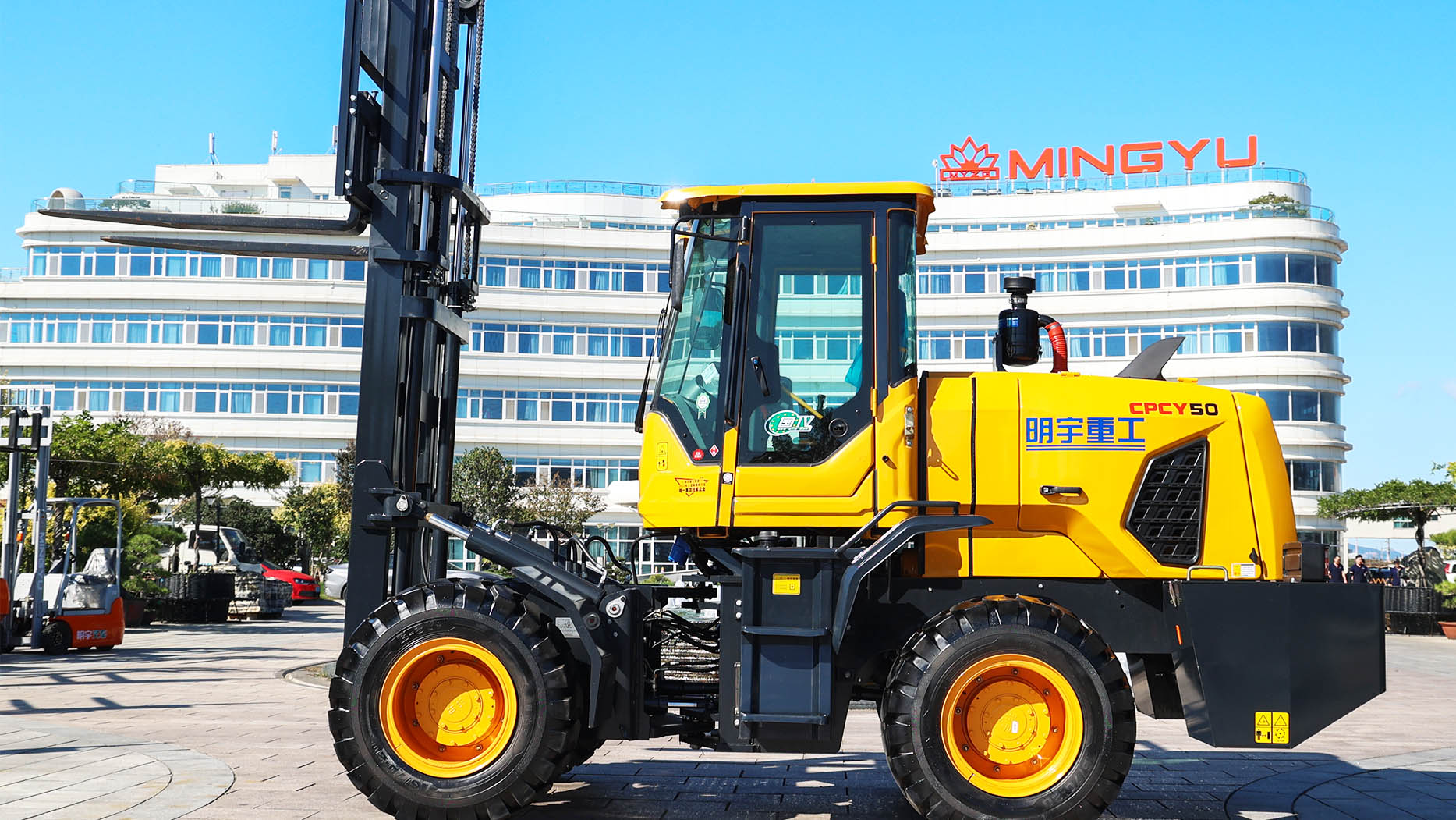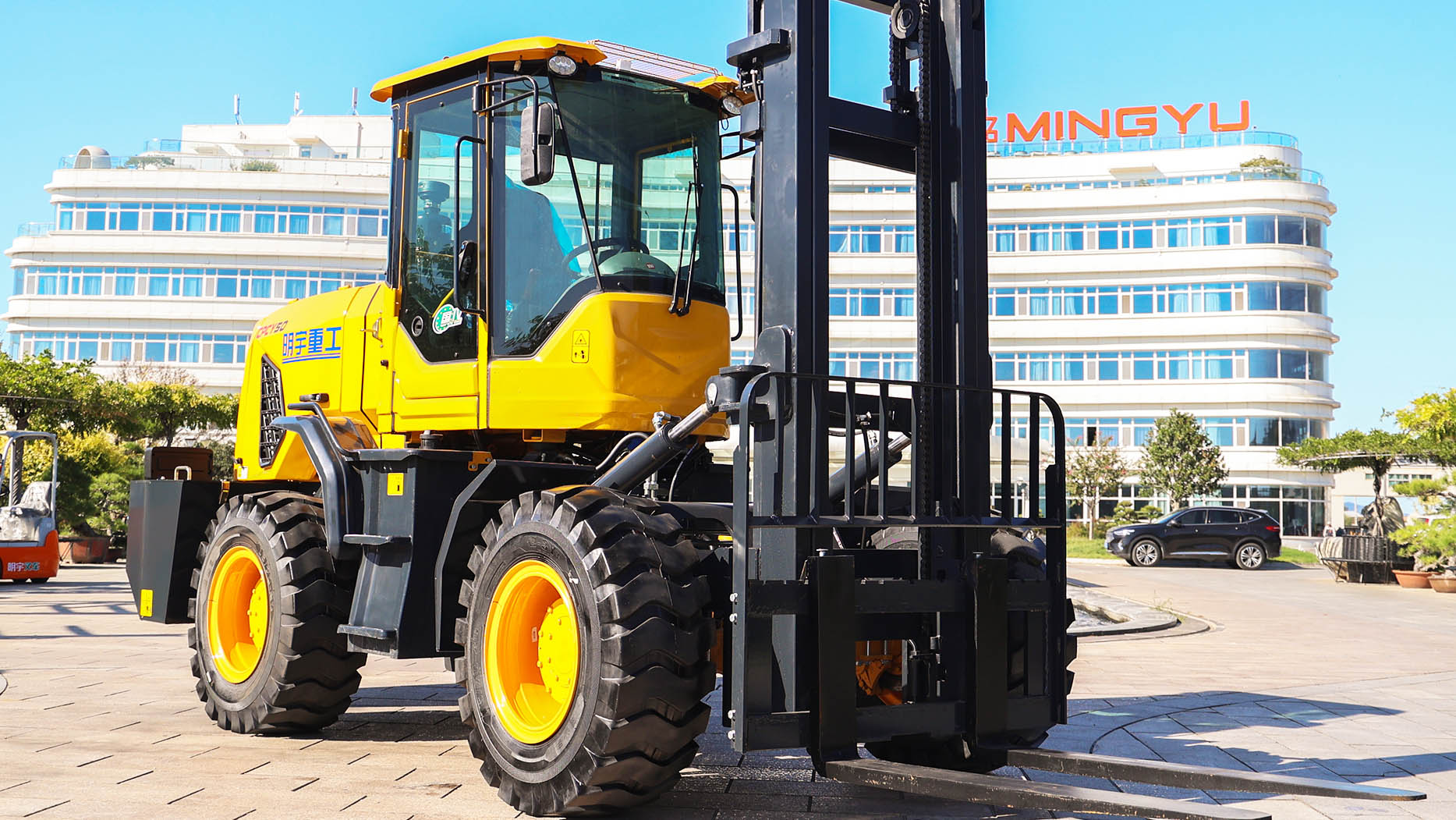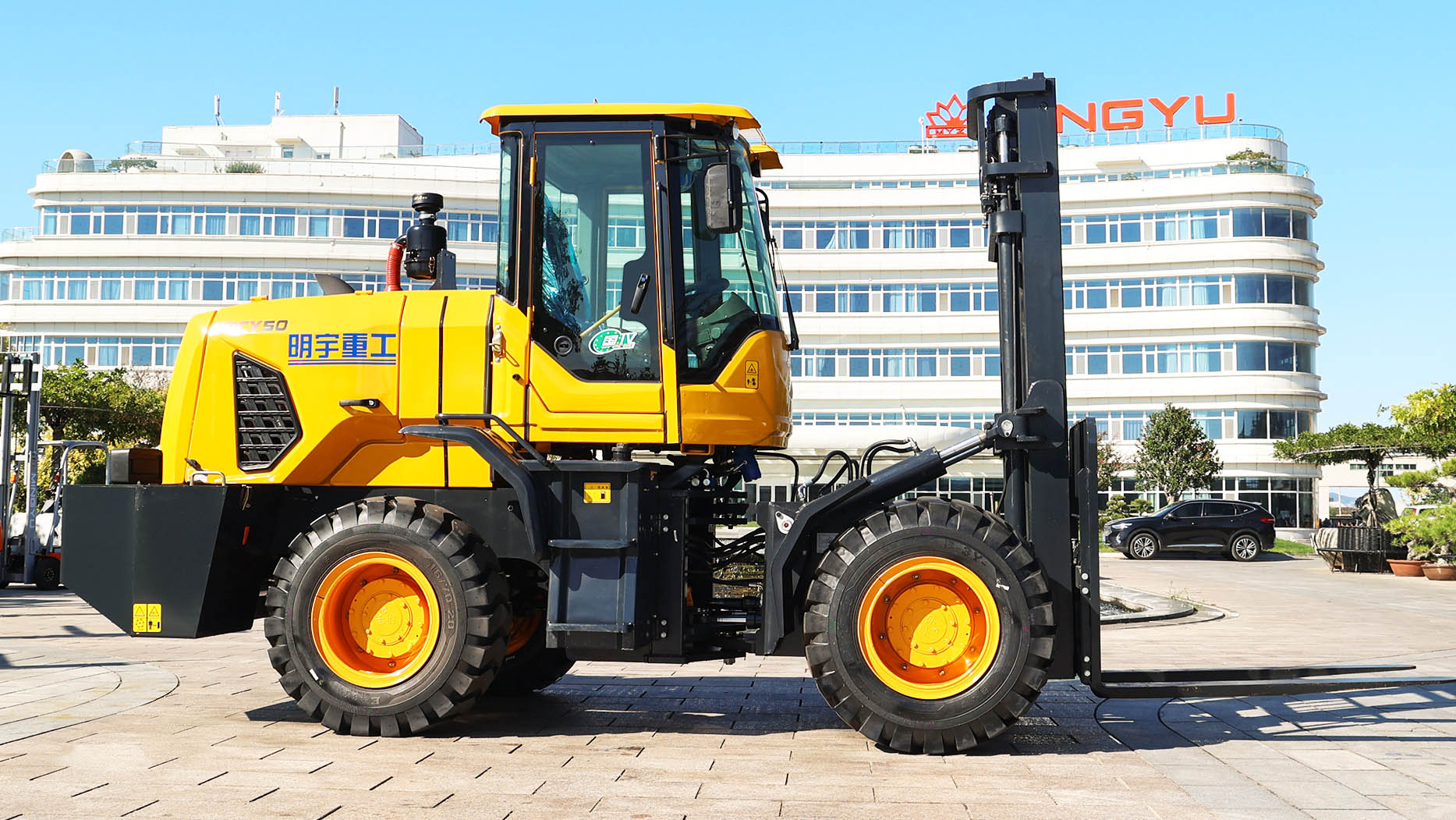When the job site extends beyond the smooth confines of a warehouse, the rough terrain forklift becomes an indispensable piece of machinery. Unlike their indoor counterparts, these rugged workhorses are engineered to conquer uneven ground, mud, gravel, and inclines, making them vital on construction sites, farms, lumberyards, and various industrial applications. A key question for any business considering this robust equipment is: What is the maximum lifting capacity of a rough terrain forklift?
The answer is not a single number, but rather a wide spectrum. The lifting capacity of a rough terrain forklift can range from approximately 2,000 lbs (1 ton) for smaller, more agile models up to an astounding 55,000 lbs (25 tons) or more for the most specialized, heavy-duty machines designed for extreme industrial or port applications. This immense range highlights the diverse needs of the industries these forklifts serve and the specialized engineering required to achieve such capabilities in challenging environments.
Factors Influencing Maximum Lifting Capacity
Several critical factors determine a rough terrain forklift's maximum lifting capacity, impacting both its design and its suitability for specific tasks.
1. Size and Weight of the Forklift Itself:
A fundamental principle of forklift design is that the machine's counterweight must be sufficient to offset the load. Larger, heavier rough terrain forklifts naturally have higher lifting capacities because they possess more mass to act as a counterbalance. The stability of the machine is paramount, especially on uneven ground.
2. Engine Power and Hydraulic System:
The power of the engine (almost exclusively diesel in rough terrain models) directly correlates with the force it can generate for lifting. A robust hydraulic system, with high flow and pressure, is essential to quickly and safely raise heavy loads. The larger the engine and the more powerful the hydraulic pump, the greater the lifting capacity.
3. Mast Design and Strength:
The mast (the vertical assembly that lifts the forks) must be incredibly strong and rigid to handle heavy, often off-center, loads without excessive deflection or damage.
* Number of Stages: Masts can be single-stage, two-stage (duplex), or three-stage (triplex). While triplex masts offer greater lift height, the overall design and strength of the mast structure are crucial for capacity.
* Construction Materials: Heavy-duty steel and reinforced components are used to withstand the stresses of lifting in demanding environments.
4. Tire Configuration and Stability:
The large, pneumatic, deep-tread tires on a rough terrain forklift are designed for traction and flotation, but their stance and the overall width of the machine also contribute to stability. A wider wheelbase generally allows for greater lifting capacity, as it provides a larger base of support. Some heavy-duty models may also feature outriggers or stabilizers for maximum capacity when stationary.
5. Load Center:
The rated lifting capacity of any forklift is always specified at a particular "load center" (the horizontal distance from the front face of the forks to the center of gravity of the load). If the load's center of gravity extends beyond this specified distance, the effective lifting capacity of the forklift is reduced. Operators must be trained to understand and respect this critical parameter for safety and performance.
6. Attachments:
While the basic lifting capacity is measured with standard forks, adding certain attachments (e.g., side shifters, fork positioners, clamps, grapples) can slightly reduce the overall rated capacity, as the attachment itself adds weight and changes the load center.

Range of Maximum Lifting Capacities by Rough Terrain Forklift Class
Rough terrain forklifts are typically categorized by their lifting capacity to suit different operational needs.
Light-Duty / Mini Rough Terrain Forklifts (Approx. 2,000 lbs - 5,000 lbs or 1 - 2.5 tons):
These are the most compact and agile rough terrain forklifts. They are ideal for smaller construction sites, nurseries, landscaping, or agricultural applications where space might be limited but the terrain is still challenging. They can effectively handle pallets of bricks, bags of concrete, small bundles of lumber, or light equipment. Brands like MINGYU/MYZG may offer compact models in this range, providing a nimble solution for tight outdoor spaces.
Medium-Duty Rough Terrain Forklifts (Approx. 6,000 lbs - 15,000 lbs or 3 - 7 tons):
This is the most common and versatile segment, often seen on general construction sites, larger farms, and medium-sized lumberyards. A forklift 3 ton diesel rough terrain model, for example, falls squarely into this category and is highly popular. These machines can handle a wide variety of materials, from heavy pallets of insulation to steel beams, medium-sized machinery, and large bales of hay. They strike a balance between lifting power, maneuverability, and cost-effectiveness.
Heavy-Duty Rough Terrain Forklifts (Approx. 18,000 lbs - 36,000 lbs or 8 - 16 tons):
Designed for more substantial tasks, these forklifts are found in large construction projects, pipe yards, some mining operations, and large-scale industrial material handling. They can lift massive concrete sections, large pipe segments, and heavy machinery components. These models typically feature very powerful diesel engines and robust chassis.
Specialized / Super Heavy-Duty Rough Terrain Forklifts (Approx. 40,000 lbs - 55,000 lbs+ or 18 - 25+ tons):
These are the behemoths of the rough terrain forklift world, custom-built for highly specific and extremely demanding applications. Their use cases include:
Port and Container Handling: Moving extremely heavy cargo, often specialized containers or components, within port facilities where terrain may not be perfectly smooth.
Steel Mills: Handling large coils of steel or heavy finished products.
Precast Concrete Plants: Lifting and moving very large and heavy precast concrete elements.
Heavy Industrial Manufacturing: Moving massive assemblies or raw materials within large outdoor yards.
These machines feature unparalleled strength, often with advanced stability systems and custom attachments.

Understanding the "Maximum" in Real-World Scenarios
While a manufacturer's "maximum lifting capacity" provides a benchmark, several real-world factors can effectively reduce this capacity during operation:
Terrain Inclination: Operating on a slope significantly reduces the effective lifting capacity due to the shift in the forklift's center of gravity. Most rough terrain forklifts have specified capacity ratings for various gradients.
Uneven Ground: Operating on severely uneven ground increases the risk of instability, and operators must reduce load weights to maintain safety.
Wind Conditions: Strong winds can affect the stability of the forklift, especially when lifting loads to height, necessitating reduced capacities.
Attachment Weight: As mentioned, any attachment added to the basic forks will subtract from the overall rated capacity.
Operator Skill and Experience: A skilled and experienced operator understands the limits of the machine and the importance of respecting load charts, especially in challenging conditions.
Maintenance Condition: A poorly maintained rough terrain forklift (e.g., worn tires, leaky hydraulics, engine issues) may not be able to achieve its rated capacity safely or efficiently. This is particularly relevant when considering a forklift second hand for sale where the maintenance history might be unknown or incomplete.
 Brands and Their Contributions to Rough Terrain Forklift Capacity
Brands and Their Contributions to Rough Terrain Forklift Capacity
Global manufacturers offer a wide array of rough terrain forklifts across the capacity spectrum. Brands known for robust rough terrain models include Manitou, JCB, AUSA, Terex, Cat, and Hyster-Yale.
MINGYU/MYZG: As part of the growing landscape of heavy equipment manufacturers, MINGYU/MYZG offers a range of rough terrain forklifts that compete on value and capability. While they might not produce the absolute largest capacity rough terrain forklifts globally (which are often specialized niche machines from a few major players), they provide robust and reliable models in the light to medium-heavy categories, including popular models like a forklift 3 ton diesel and potentially larger capacities. Their focus is often on delivering strong performance and durability at a competitive price point, making higher-capacity rough terrain solutions more accessible to a wider market segment.
Other Considerations: Beyond Lifting Capacity
While maximum lifting capacity is a primary concern, other factors are equally vital when choosing a rough terrain forklift:
Lift Height: How high do you need to lift your loads?
Reach: Do you need to place loads over obstacles or deep into a truck? (Telehandlers might be a better fit if horizontal reach is paramount).
Maneuverability: How tight are your operating spaces? A mini forklift might be better for very confined outdoor areas.
Fuel Type: As noted, almost all are diesel forklift models due to power and durability needs.
Attachments: What specialized tools do you need (e.g., buckets, clamps, jibs)?
Operator Comfort and Safety Features: Enclosed cabs, HVAC, intuitive controls, and robust safety systems enhance productivity and reduce risk.
Service and Parts Availability: Ensure you have access to qualified technicians and parts for your chosen brand, whether it's a new purchase or a forklift second hand for sale.
In conclusion, the maximum lifting capacity of a rough terrain forklift is incredibly varied, stretching from a few thousand pounds for compact models to tens of thousands for industrial behemoths. This capacity is a function of the machine's size, engine power, mast strength, and stability design. While a forklift 3 ton diesel model is a popular choice for its versatility, specialized applications demand much greater power. When selecting a rough terrain forklift, understanding these capacity ranges and the factors that influence them, including offerings from brands like MINGYU/MYZG, is paramount to ensure you acquire the right machine for safely and efficiently tackling your toughest material handling challenges.
Post time:Jul.03.2025
